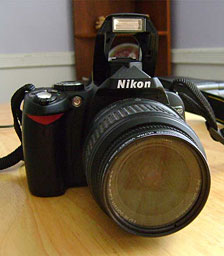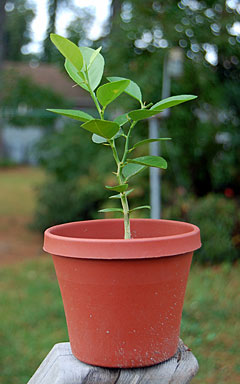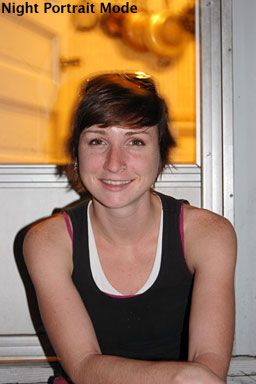2008: I recently decided that it was finally time for me to purchase my first digital SLR. I’d been looking at various cameras, features, and megapixels, and I decided that the Nikon D40 fit my needs (and wallet). Uncle Sam’s recent generosity of the economic stimulus check made the purchase even easier.
I’m not a professional photographer, but I like the control and features an SLR provides. If you’ve never used one, I’m sure you’ll be quite surprised how you can take decent photos just by turning the mode dial on the camera.
Features
The D40 has a 6 megapixel sensor. Before you form any negative opinions about it, though read Dan Knight’s article Busting the Megapixel Myth.

Nikon D40 DSLR
You can set the quality levels of your photos to RAW and various JPEG settings. RAW images are uncompressed image files that give you maximum control when you process your photos. I prefer to leave the camera set to JPEG files with “fine” quality, which gives you 3008 x 2000 pixel images. This also gives you more space on your memory card, as RAW images are incredibly large compared to JPEGs.
The shutter on the D40 (and most low-cost DSLRs) is rated at 50,000 cycles. That doesn’t mean at 50,000 photos your expensive camera is going to stop working. I asked a photographer friend about this, and he told me that their pro cameras (which are rated at 100,000 cycles) have gone well over the 100,000 mark and still work fine. There is just no guarantee that the camera will function perfectly once the cycle limit is reached.
Although it’s not an outstanding feature, the D40 uses a rechargeable battery that (in my experience) lasts for several hundred shots. Your experience may vary.
Built-in Flash
My Canon Rebel film SLR did not include a built-in flash, which I found limiting as a beginner to photography. I did have an old Speedlight, which ate up four AA batteries at astounding rates.
Thankfully, the D40 has a built-in flash that is more than adequate when you need to use it. The flash range is about four to six feet, and it does not drain the rechargeable battery much.

The included lens is very sharp.
Optics
Nikon chose to sell the D40 as a kit only, meaning that you can’t buy the body separate from the lens.
That’s not such a bad thing, since the included 18-55mm lens is pretty good. Like almost all modern lenses, it includes an autofocus mode that for most users will be just fine. It focuses reasonably quickly, but it’s not really ideal for sports or fast moving shots, in my opinion.
The auto focus motor is also quiet, which is important if you need to make as little noise as possible. What is noisy is the light meter “beep”, which can be turned off. The shutter noise is soft, but still a bit loud for me.

Presets
The camera has six preset modes for photography: portrait, landscape, child, sports (or fast action), macro, and night portrait. These modes are extremely useful when you don’t have the time to properly set up a shot using the manual controls.
I was especially pleased with the night portrait mode, which sets the camera to best utilize the available light behind your subject.
Nikon has an online digital tutor with movies explaining each of the modes (and other functions of the camera). The site is free and can help you learn more about the D40’s shooting modes.
Memory
The D40 uses Secure Digital cards (SD) and will work with most major brands. I use a 2 GB card made by SimpleTech and have had no problems with it. In fact, I simply pulled the card from my old digital camera and formatted it for the D40 (Nikon recommends this).
Final Thoughts
Overall, I’m happy with my purchase of the D40. I paid $499 for the kit, which included the lens, battery, USB cable, and software. The software is just basic categorizing software, so if you want to do any editing you’ll need to look to iPhoto or something in the Photoshop family.
The camera is lightweight, responsive, and feels well made. Spending $500 for a camera stings a bit (for me anyway), but I’m confident that the D40 is going to last me for quite a while.

